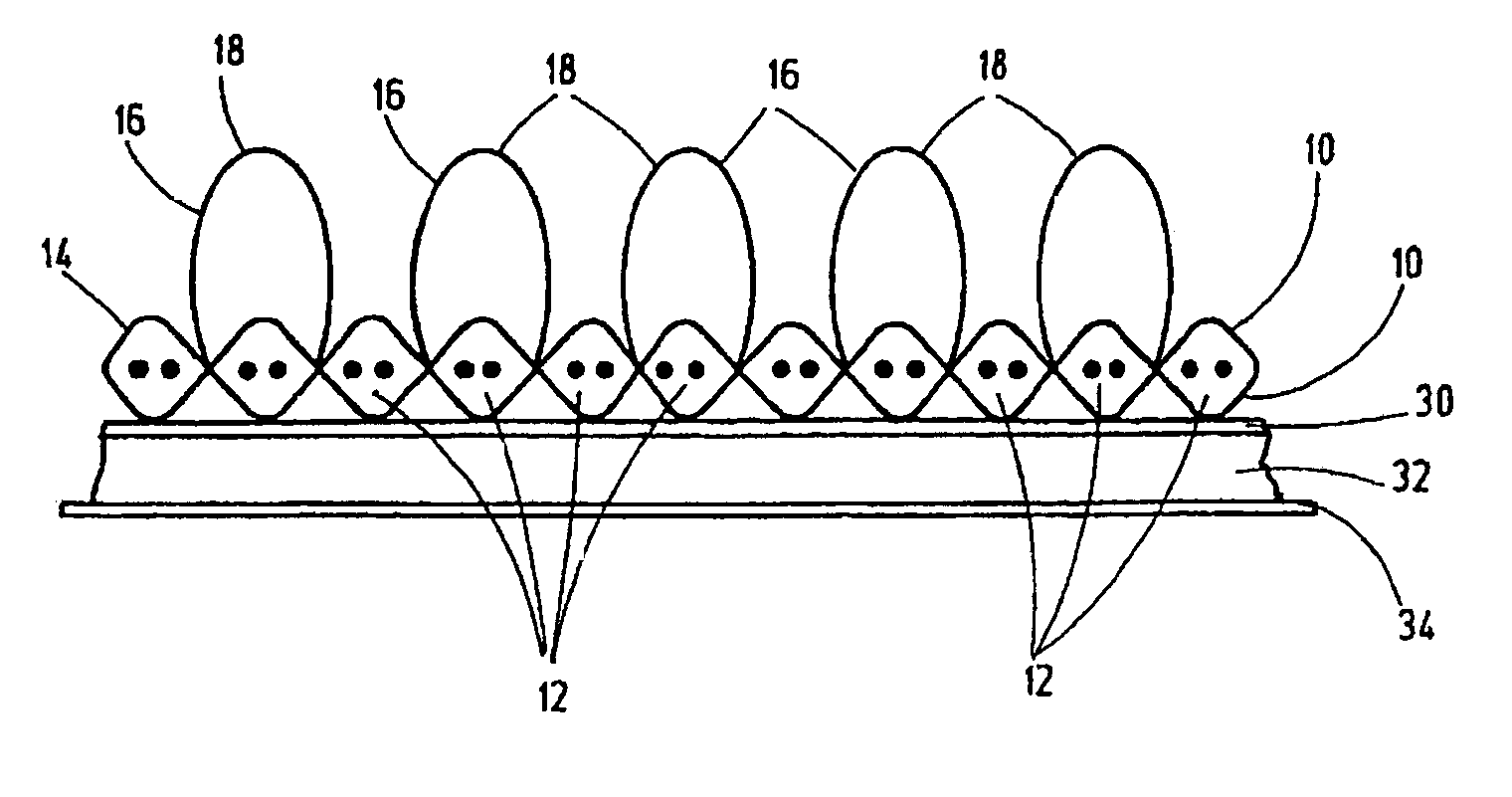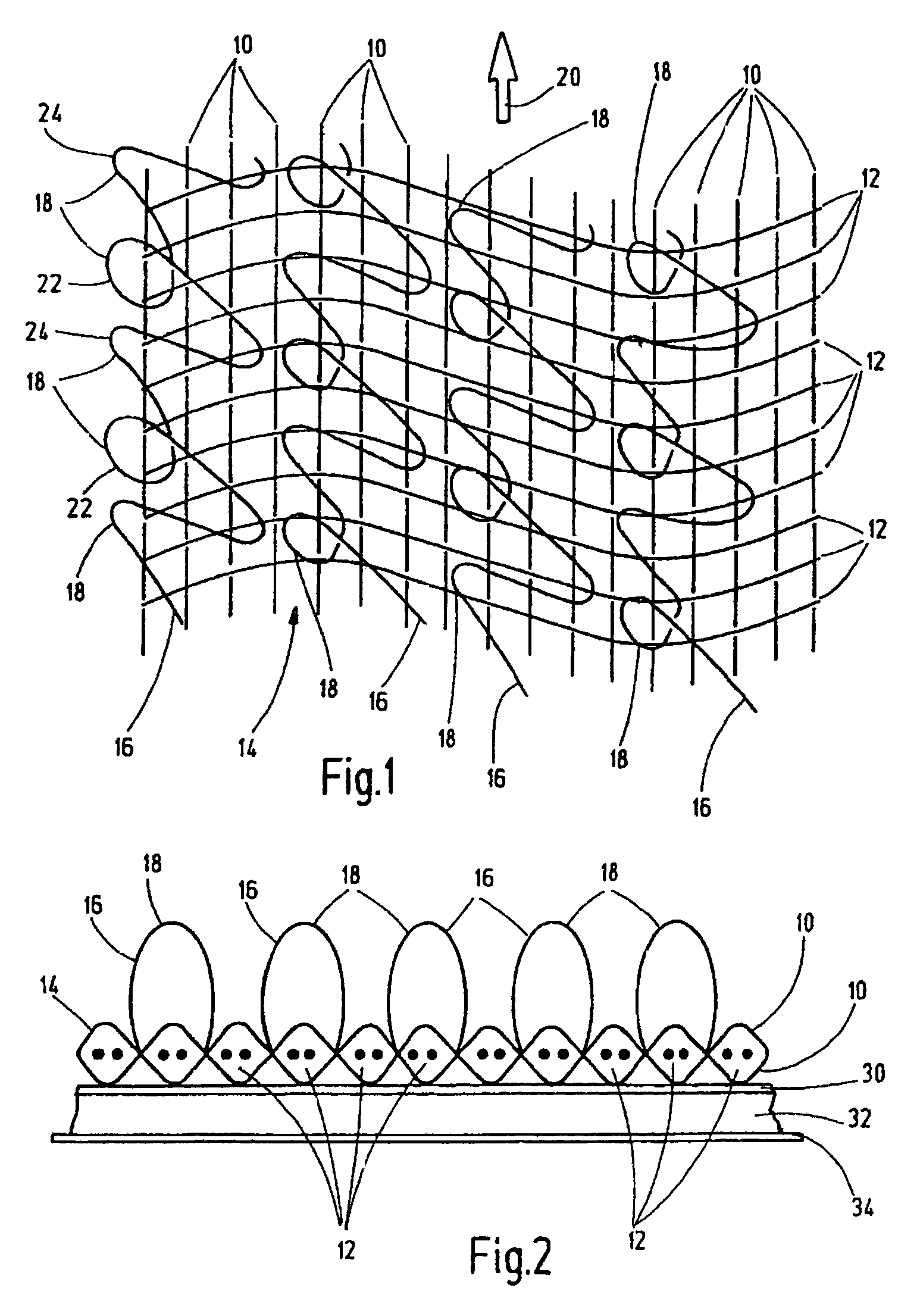Flame-resistant closure
a technology of flame-resistant closures and closures, applied in the field of flame-resistant closures, can solve the problems of high implementation costs, insufficient measures to meet the more stringent flame-protection guidelines, and the use of carbon fiber materials, which has, however, proved very costly, and achieves low flammability. , the effect of economic production
- Summary
- Abstract
- Description
- Claims
- Application Information
AI Technical Summary
Benefits of technology
Problems solved by technology
Method used
Image
Examples
Embodiment Construction
[0015]FIG. 1 shows by an extract a top view of a two-dimensional hook and loop closure part which can be optionally lengthened within the plane of the figure in both directions or either direction of the figure. The geometrical dimensions of the sheet article are dependent on the specifications of the weaving means on which the hook and loop closure part is made. Especially for later use, these closure parts are manufactured as hook and loop closure strips wound into rolls (not shown). The closure part includes warp threads 10 and weft threads 12 woven in a transverse arrangement to one another to form the backing fabric 14 for the hook and loop closure part. The backing fabric 14 is provided with functional threads 16 in the manner of pile threads to form a further part of the backing fabric. The functional threads 16 form the individual closure elements 18 for the two-dimensional hook and loop closure part.
[0016]Viewed in the direction of FIG. 1, on its top the production directio...
PUM
| Property | Measurement | Unit |
|---|---|---|
| Electrical resistance | aaaaa | aaaaa |
| Heat | aaaaa | aaaaa |
| Flammability | aaaaa | aaaaa |
Abstract
Description
Claims
Application Information
 Login to View More
Login to View More - R&D
- Intellectual Property
- Life Sciences
- Materials
- Tech Scout
- Unparalleled Data Quality
- Higher Quality Content
- 60% Fewer Hallucinations
Browse by: Latest US Patents, China's latest patents, Technical Efficacy Thesaurus, Application Domain, Technology Topic, Popular Technical Reports.
© 2025 PatSnap. All rights reserved.Legal|Privacy policy|Modern Slavery Act Transparency Statement|Sitemap|About US| Contact US: help@patsnap.com


